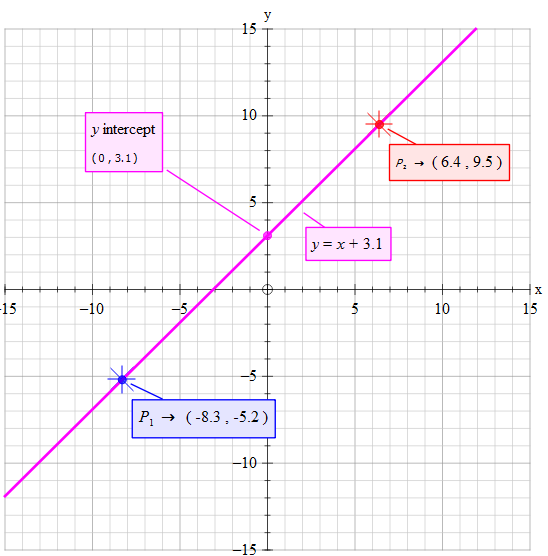What is the function of the line that passes through the points #(-8.3, -5.2)# and #(6.4, 9.5)#?
2 Answers
Solution provided in a lot of detail taking you through it 1 step at a time.
Explanation:
Set point 1 as
Set point 1 as
Consider the standard straight line equation form of
Gradient (slope) is the change in the up or down for the change in along reading left to right. So we are traveling from
~~~~~~~~~~~~~~~~~~~~~~~~~~~~~~~~~~~~~~~~~
Change in up or down:
change in
Change in along:
change in
So
so
It is bad practice to show the 1 so we write:
~~~~~~~~~~~~~~~~~~~~~~~~~~~~~~~~~~~~~~~~~~~
Picking any point. I chose
So by substitution:
Subtract
~~~~~~~~~~~~~~~~~~~~~~~~~~~~~~~~~~~~~~~~~~~~~
So our equation becomes:

Showing you trick
Explanation:
Lets make determining the gradient easier:
I do not like decimals so lets get rid of them.
Multiply everything by 10.
Changing the scale should not change the slope
so the gradient

